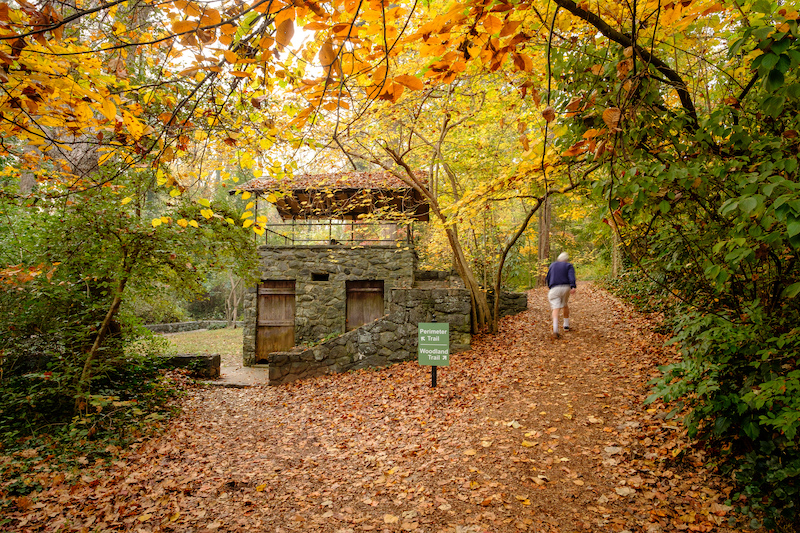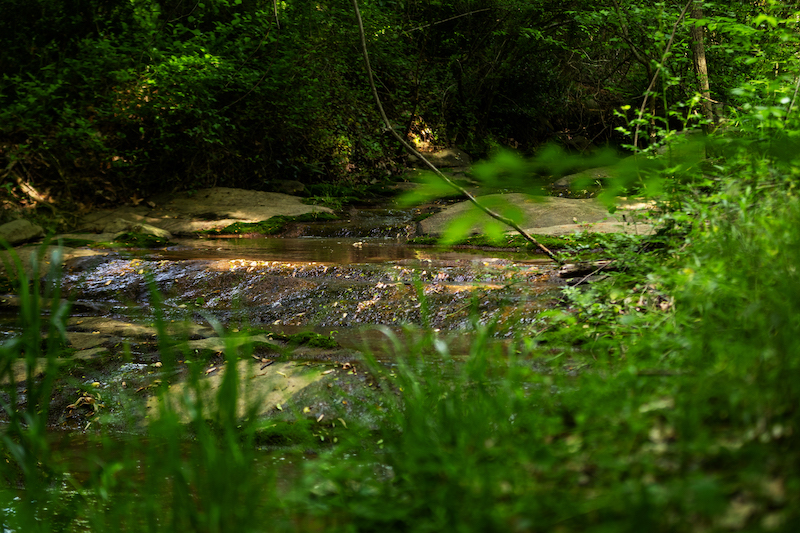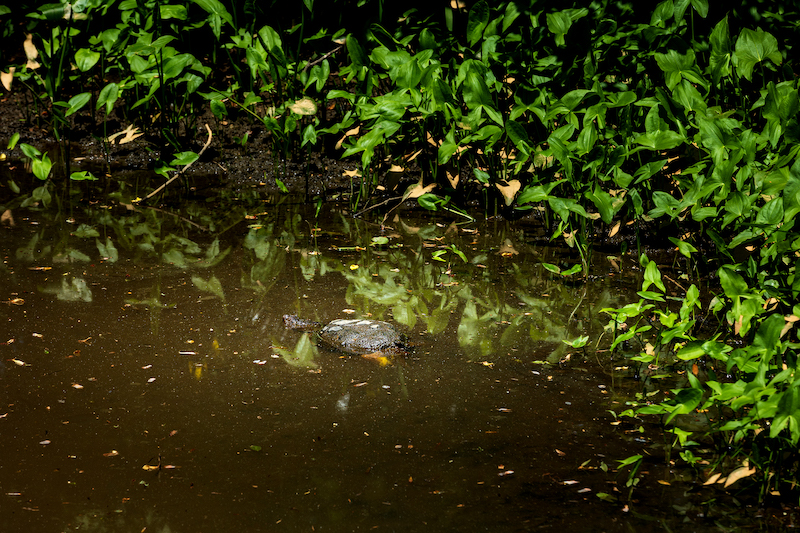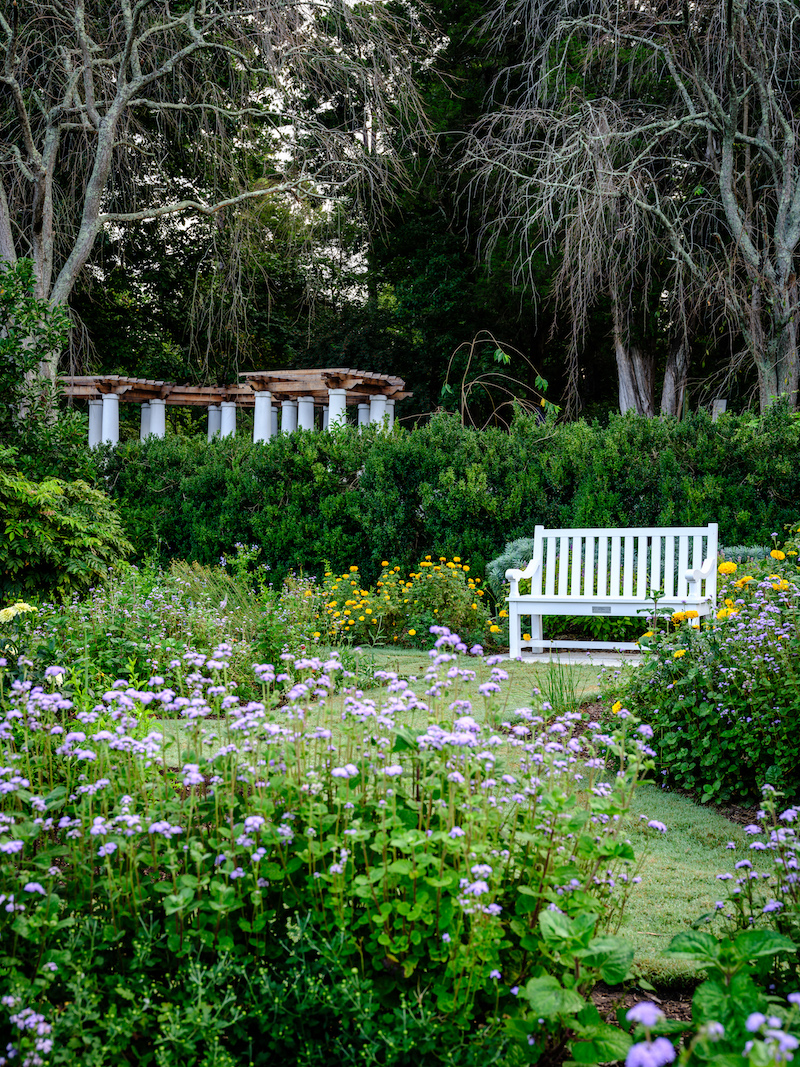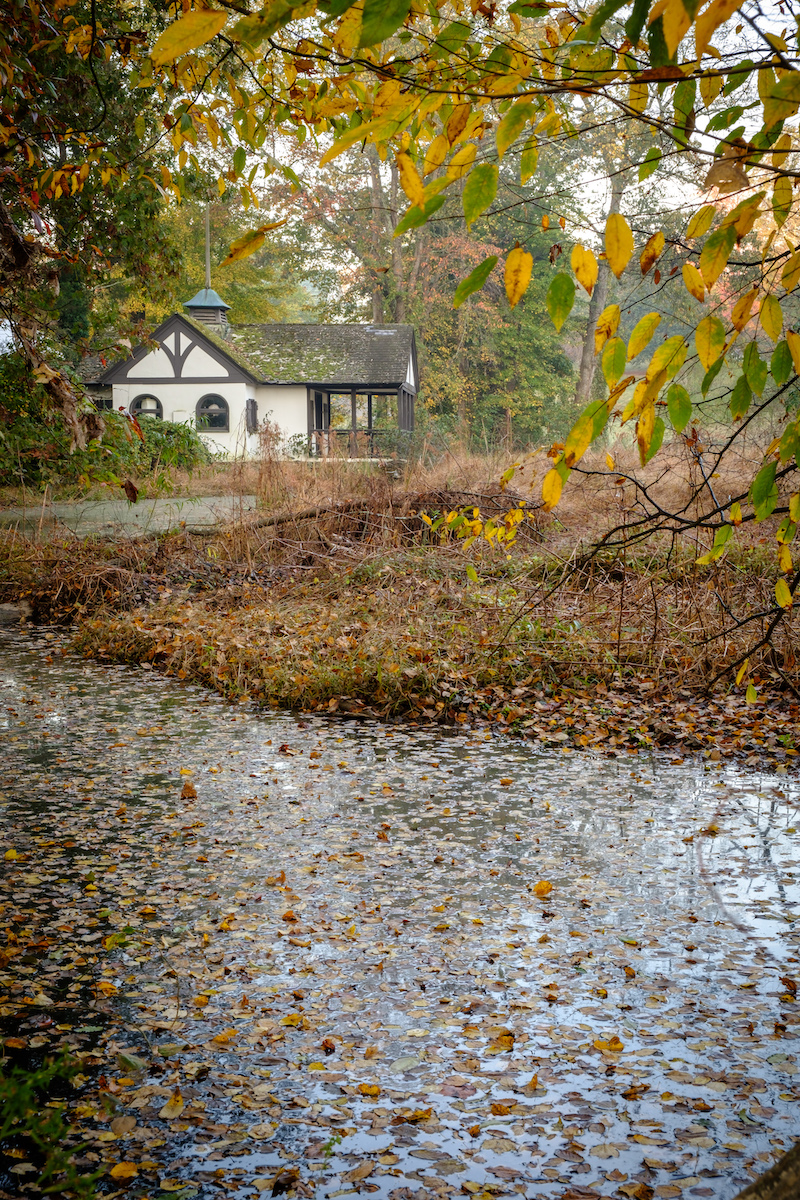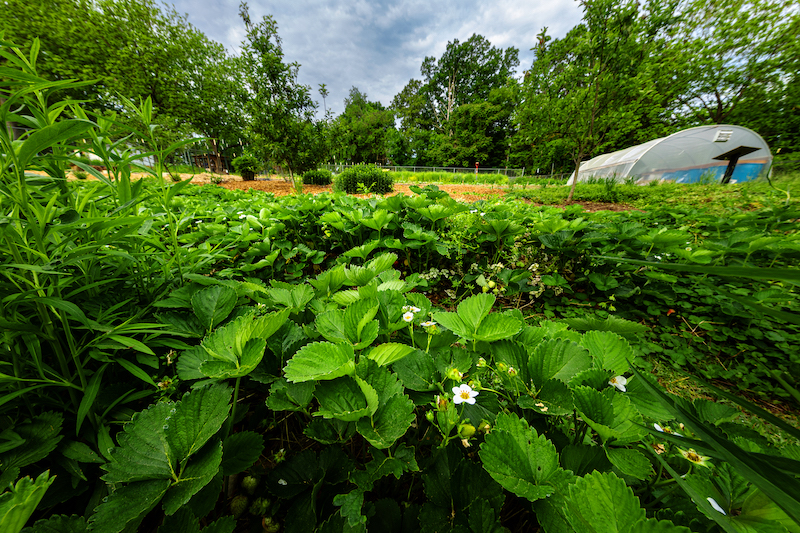
AN EDITOR’S JOURNEY:
I spent a few sunny spring days visiting three of my favorite gardens among the abundance of natural spaces treasured by Wake Foresters. Their gardeners taught me to notice the many roles these lands play in our community.
The half-acre Campus Garden, a one-minute walk from the soccer field across Polo Road, features crops such as sweet potatoes, green beans and tomatoes, sustainably grown by volunteers since 2009 and donated to Campus Kitchen. The tiny Tohi Garden, which opened in 2010, is tucked behind Maya Angelou Residence Hall. Native plants adorn its pathway along the creek and call to mind Indigenous peoples who walked here — the Saura, Catawba, Cherokee and Lumbee tribes. Its rainwater catchment ponds allow sediment in water to sink, then the cleaner water is reoxygenated as it tumbles down a series of rocks. Reynolda Gardens is a familiar place to students and local residents, and its 134 acres include wetlands, trails and a formal garden. Originally part of R.J. and Katharine Reynolds’ 1917 estate, the gardens draw 140,000 visitors yearly.
Jon Roethling, director of Reynolda Gardens, sees his job as honoring Katharine Reynolds’ original vision for the estate while making it relevant for today by designing gardens to elicit curiosity and surprise. He finds magic at sunrise in the meadow and in visitors’ stories. Nathan Peifer (MDiv ’13) was in divinity school when he first dug into local food and community gardening. He interned at the Campus Garden and, as an alumnus, returned to the Office of Sustainability as Campus as Lab program coordinator to manage the garden and facilitate opportunities for classes to learn there. He shares his enthusiasm with these classes. Recently, students in a class on the music of world cultures turned garden-grown gourds into instruments, first-year seminar students learned about the relationship between climate change and agriculture, and students in a Humanity and Nature class conducted their final exam in the garden by presenting their writing to classmates and harvesting the garden’s bounty, which they grew from seed together.
These garden spaces, while different from one another, all call to us: Come and be restored in nature. — Katherine Laws (’20)
CAMPUS GARDEN
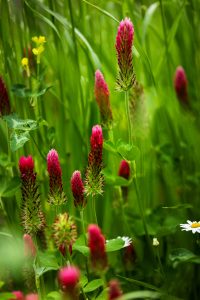
“The appeal of the Campus Garden is experiential learning. You can come out, you can plant seeds, you can dig in the soil, you can turn the compost, you use your hands, you use your senses.”
—Nathan Peifer
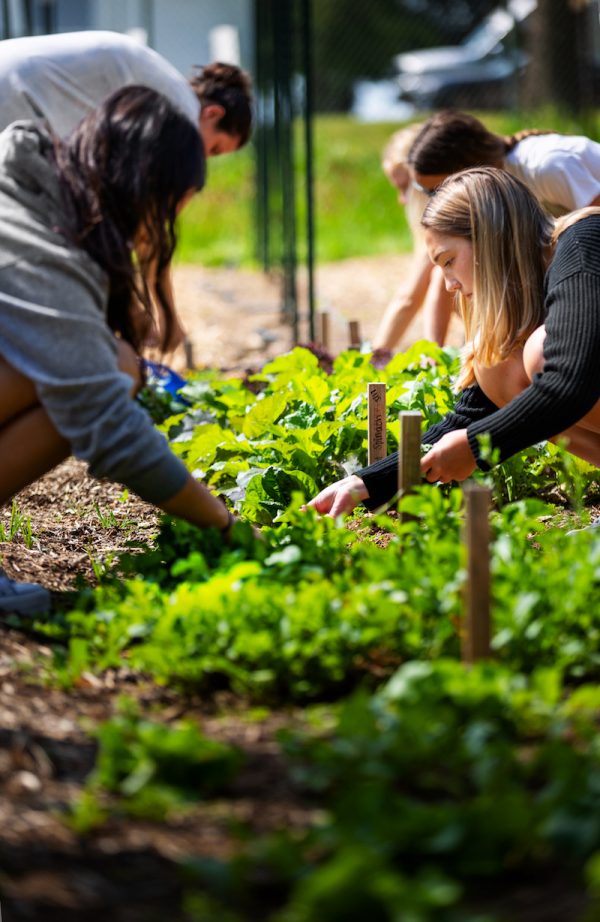
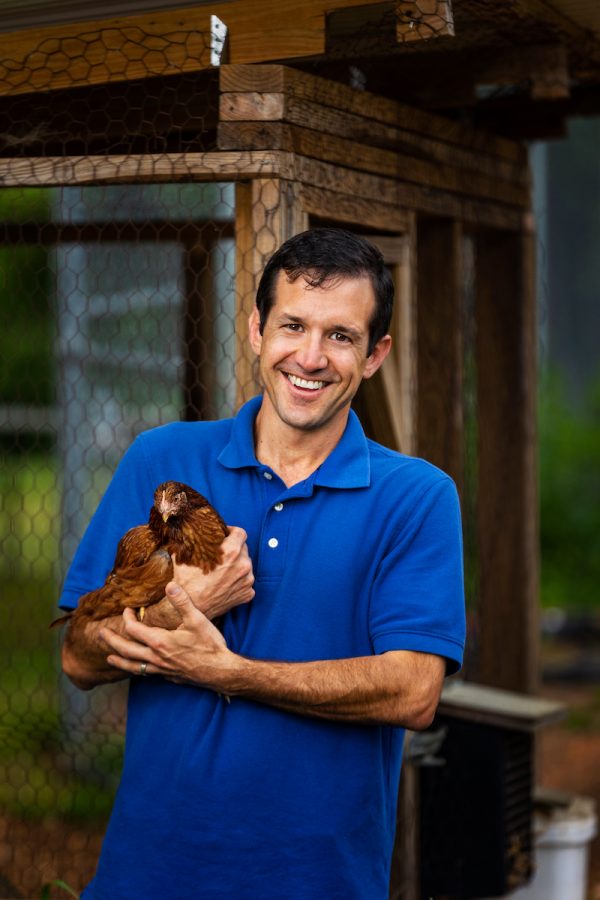
Peifer interned for Dedee DeLongpré Johnston, vice president for human resources and sustainability, who is widely praised for leading the University’s first campuswide Office of Sustainability and for gaining national recognition for its work. After finishing divinity school, Peifer returned to DeLongpré Johnston, saying, “I have an idea. Do you think I could manage the Campus Garden space for you?” That idea blossomed into the Campus as Lab Program, which gives students experiential learning opportunities at the Campus Garden and across campus.
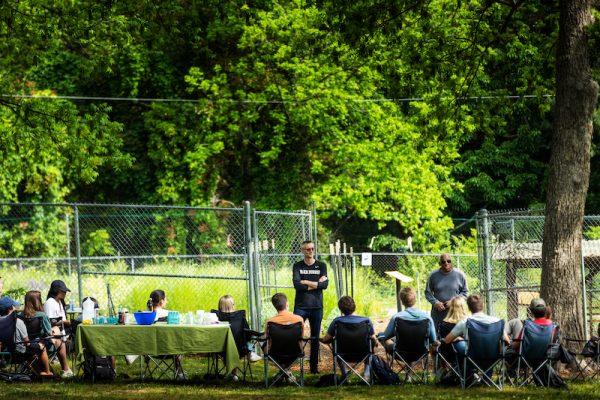
Final exam day for Ron Von Burg’s Humanity and Nature class.
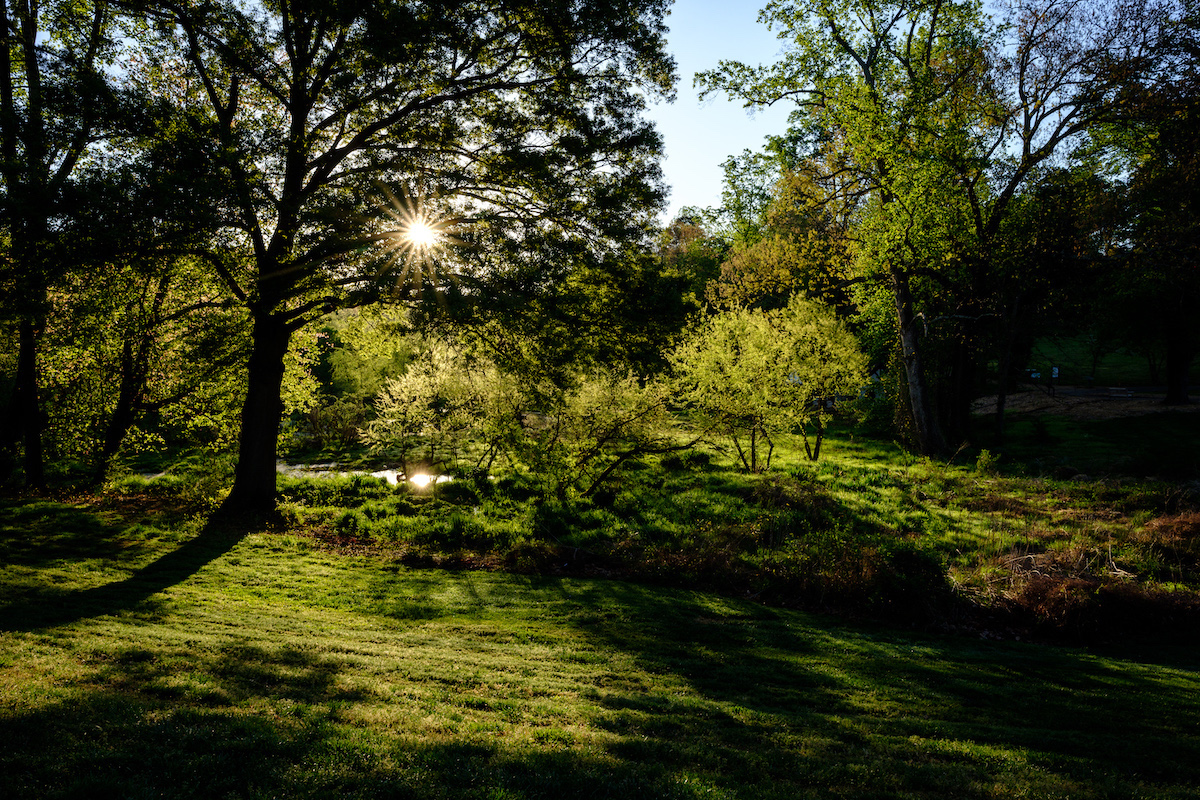
Peifer invites students:
“Let’s taste the arugula flower. Feel the seed pod on a clover flower and just how soft it is. Grasses can be sticky and kind of sharp. … Notice different colors, different textures, different heights. … Utilizing your senses like that helps plant you in that moment.” A diverse garden benefits our well-being, Peifer says, but it also benefits the garden. “The thing that makes sustainable agriculture sustainable is the resilience that comes with diversity.”
—Nathan Peifer
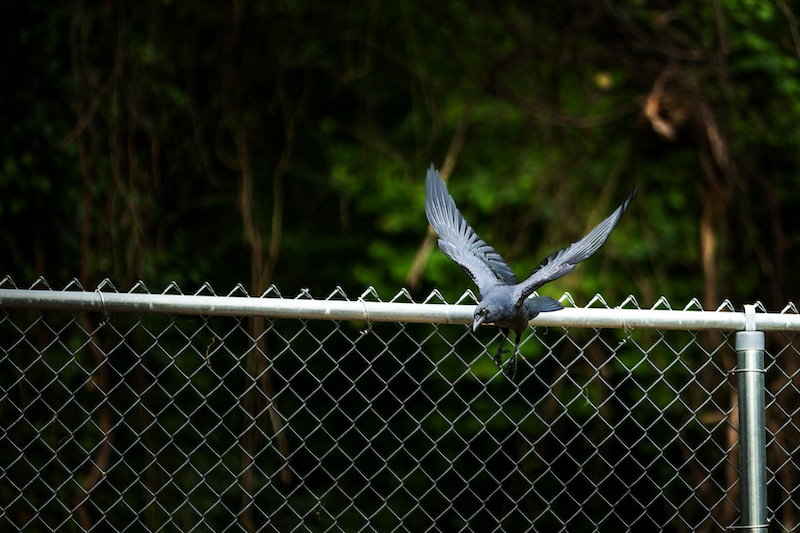
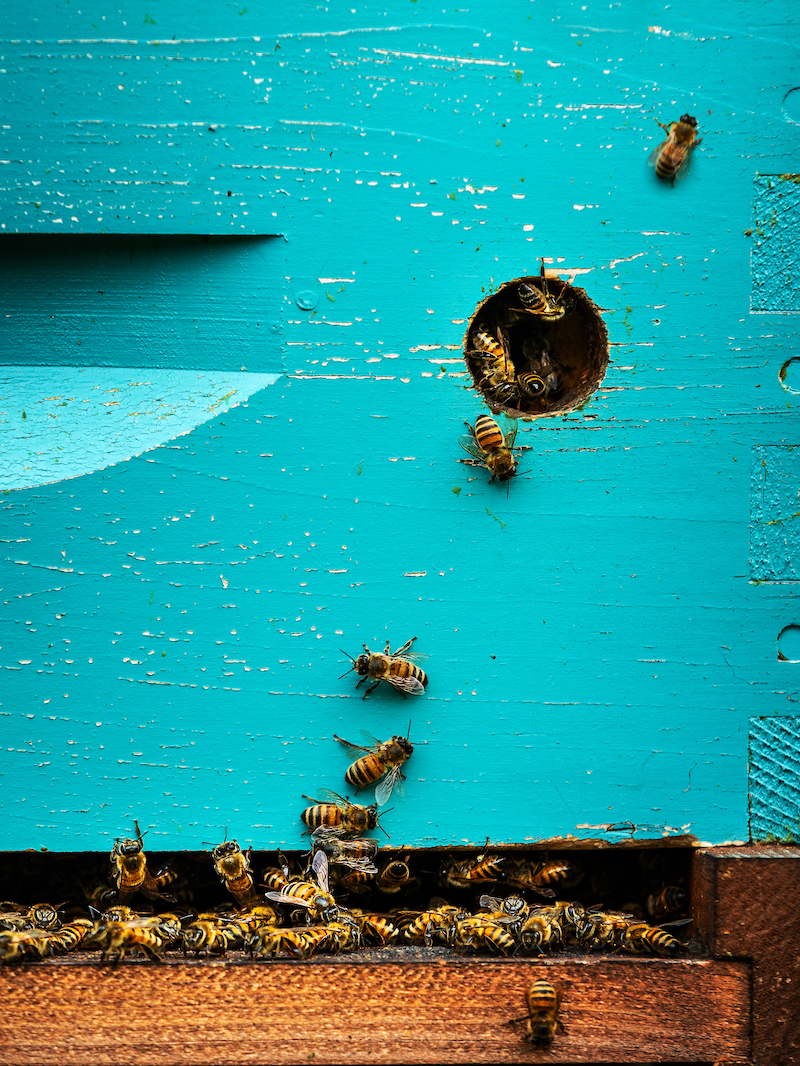
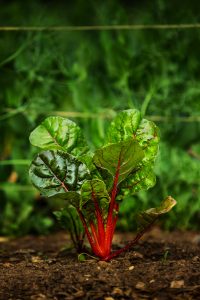
“The Campus Garden, … especially after COVID, became a well-being space. … A lot of students have expressed to me how much they enjoy just getting away from campus, being in a quiet place.”
—Nathan Peifer
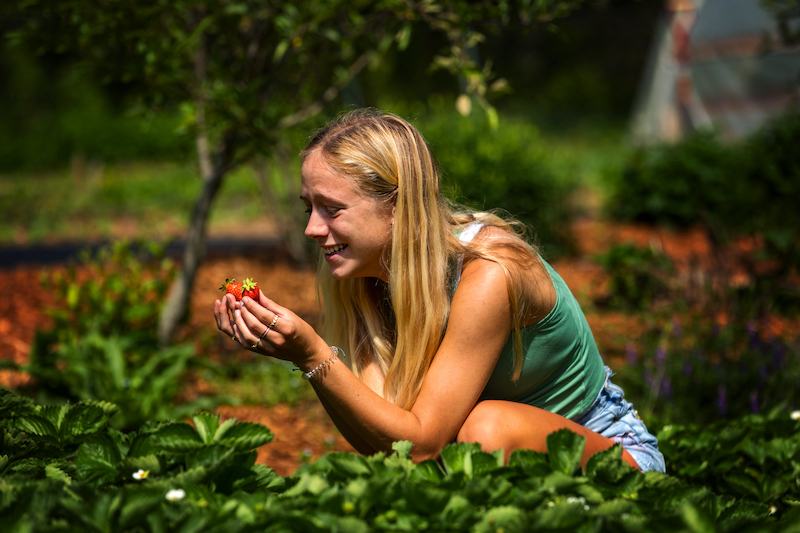
“Gardening for me is first and foremost a community activity. It is about the gardener planting themselves in a community, learning the soil, learning the trees, learning the other organisms that are in the space … and then sharing that with other human beings.”
—Nathan Peifer
TOHI GARDEN
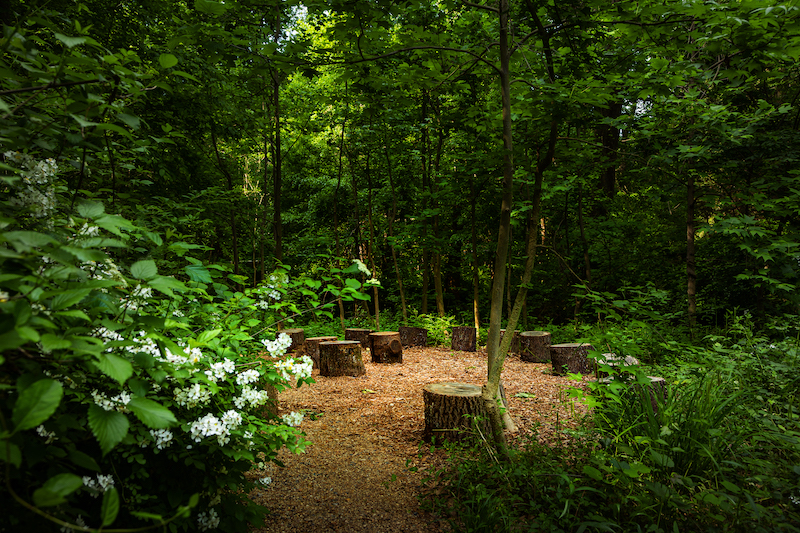
The garden project, which began in 2008, was completed on Earth Day in 2010 when the Tohi Garden opened with a Native American blessing of the space. In 2021, Sakina Barthe-Sukhera (’22), who interned in the Office of Sustainability, revitalized the space using materials sourced from campus and native plants. This has inspired the Tohi Talks event series in the garden.

“We have removed plants; we have planted new plants. … We have left our mark. Our hope is that it’s a gentle mark, one that allows for the flourishing of many different kinds of life.”
—Nathan Peifer
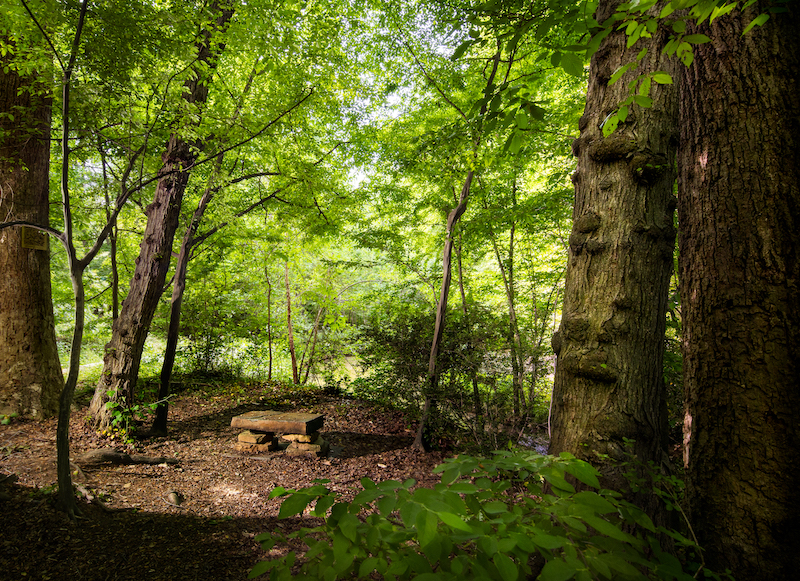
“The Cherokee phrase ‘Tohi’ is captured in the essence of how water moves through this space. Tohi is about balance. It’s about stopping, settling and then slowly moving forward.”
—Nathan Peifer
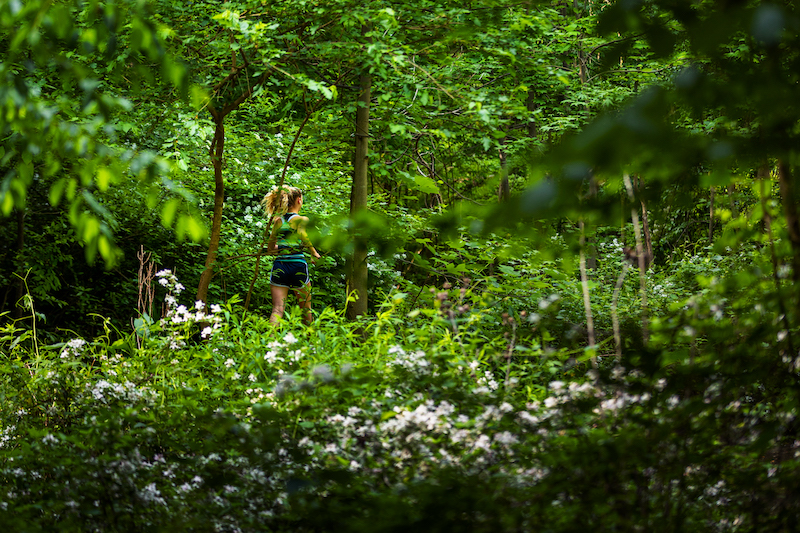
“My hope is that students and participants come away with a sense that, ‘I am a member of this living thing,’ with the ultimate goal that that sense of identity will drive them to make more sustainable lifestyle choices and to be part of the movement to reverse climate change.”
—Nathan Peifer
REYNOLDA GARDENS
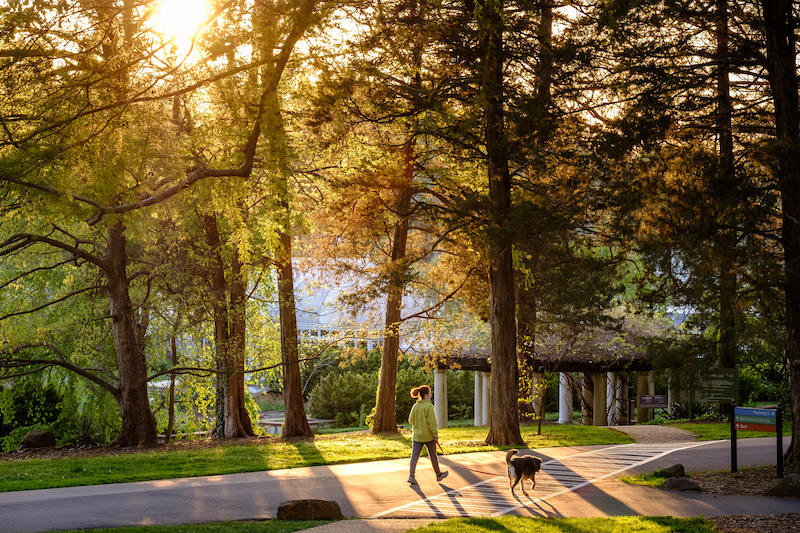

“The value of green spaces and public gardens as a whole is serving as this resource for a community — of respite, of education, of connection. … They’re vital to healthy communities.”
—Jon Roethling
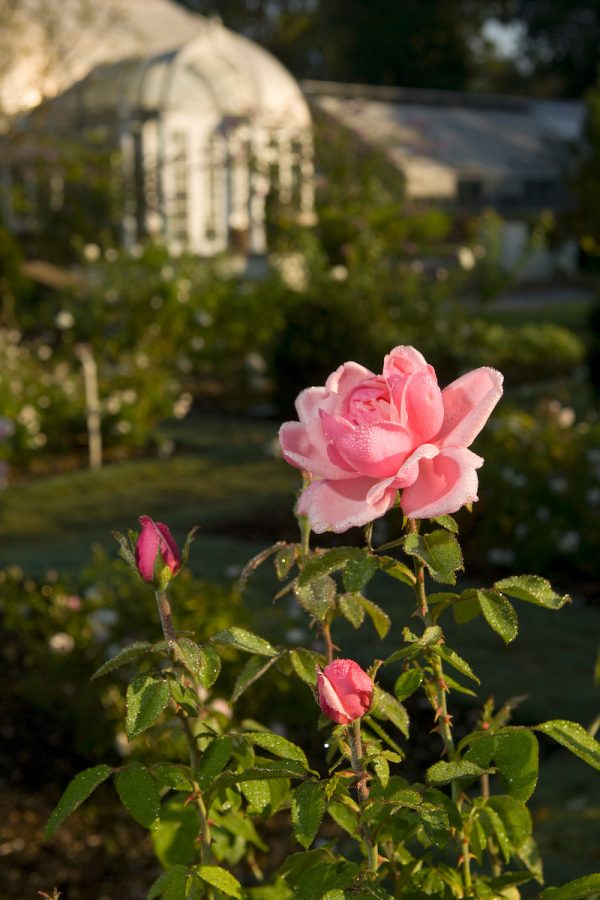
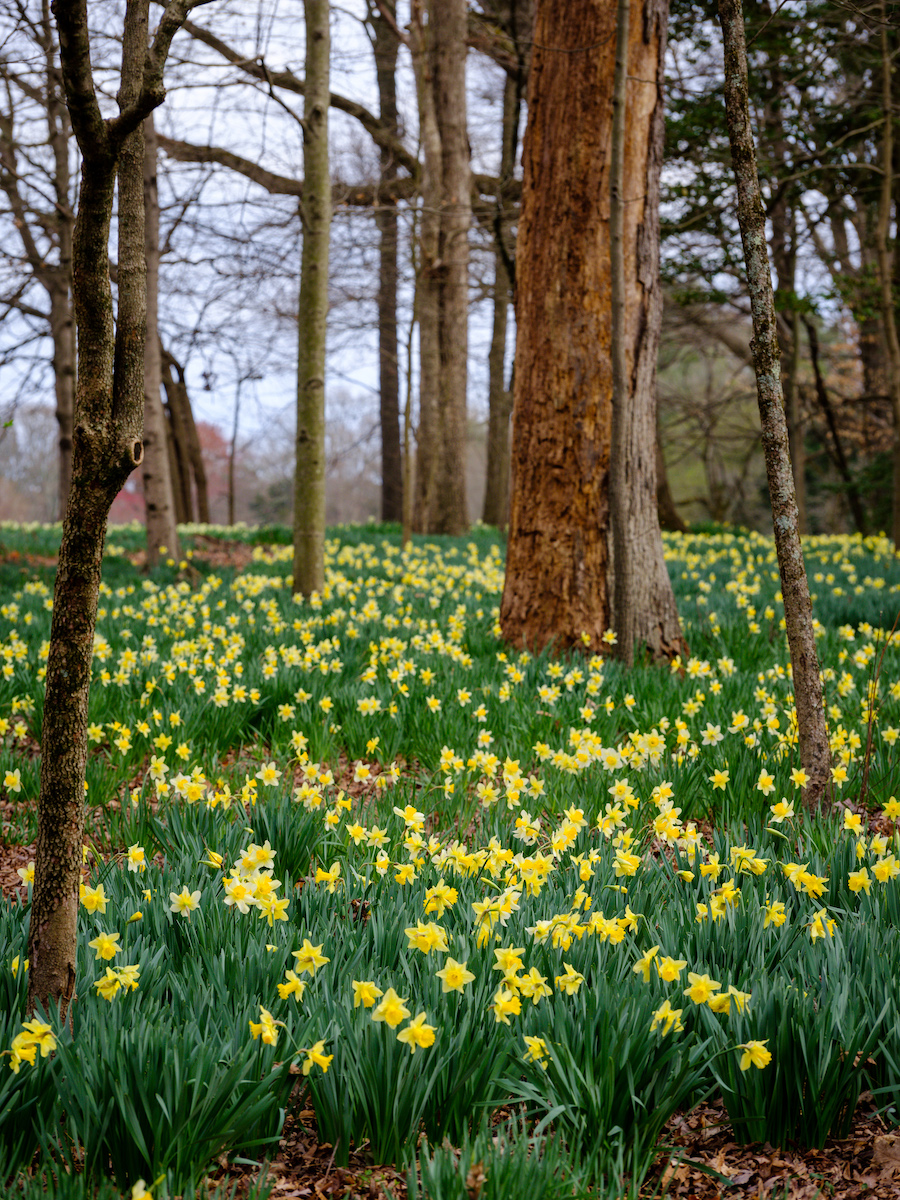
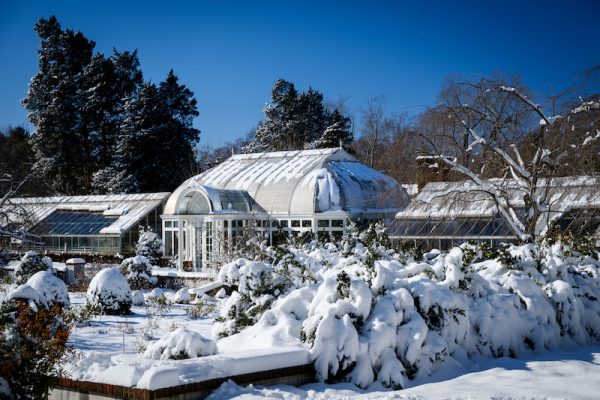
“You’re always getting emails. You’re always getting texts. Take the cue from nature. There’s a time to rest. … The trees drop their leaves, and they shut down for the winter.”
—Jon Roethling
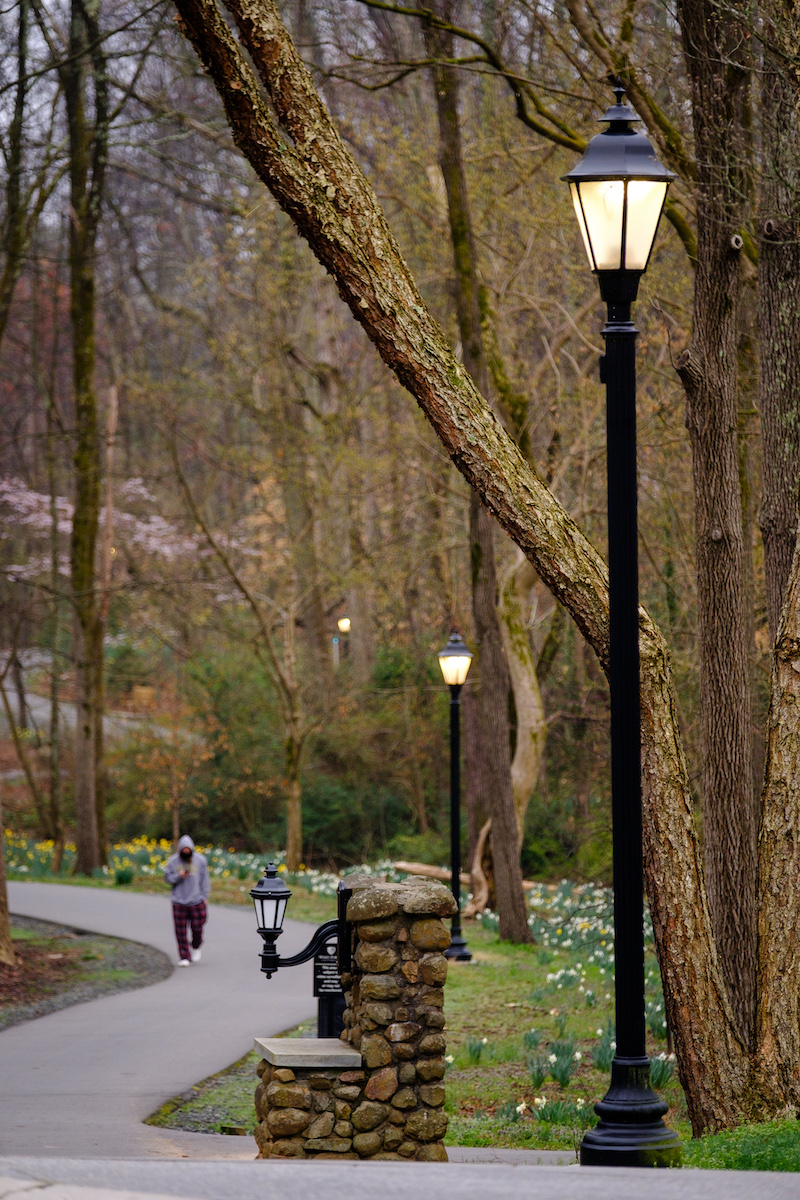
“Fragrance can trigger memories,” says Jon Roethling, who thinks of scent when he plants in the garden. He says you may smell Ligustrum flowers at the start of summer or think of autumn when the Osmanthus blooms. Perhaps you recognize the smell of your grandmother’s rose.
—Jon Roethling
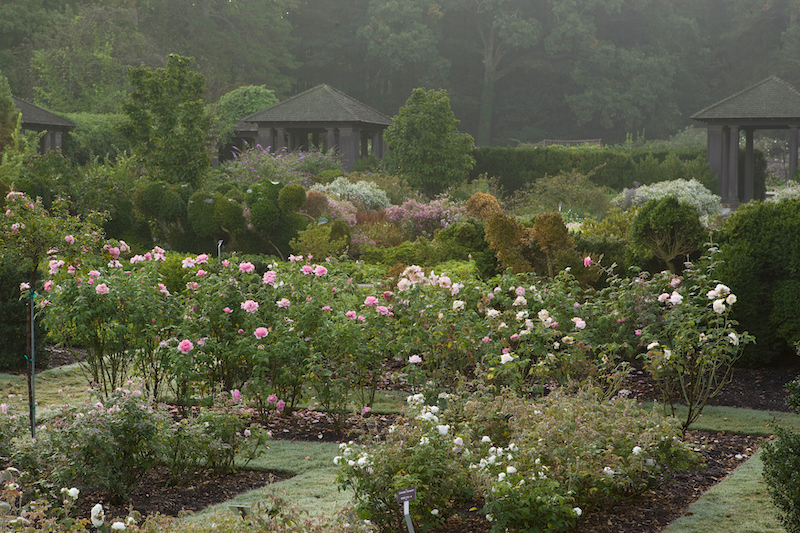
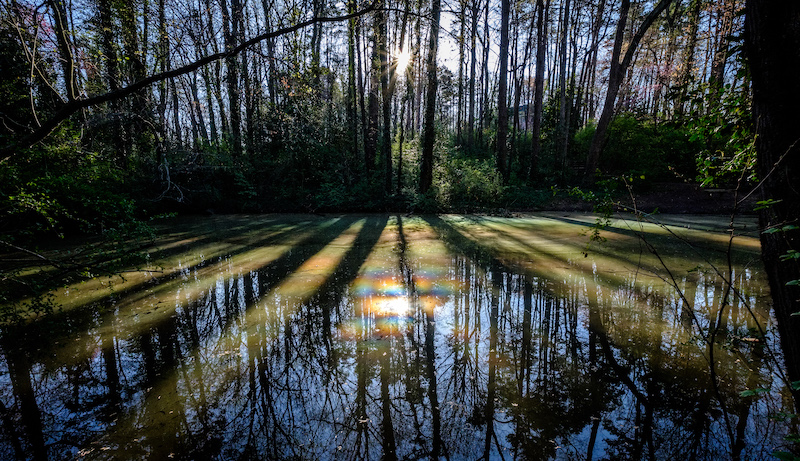
The Reynolda estate is also a haven for wildlife, including hawks, bluebirds, owls, coyotes, deer, turtles, beavers and foxes.
“I love getting to know some of these people. Some of them, you see them in good times and bad,” Roethling says of visitors. “But this is sometimes the place they come to make sense of it all.”
—Jon Roethling
